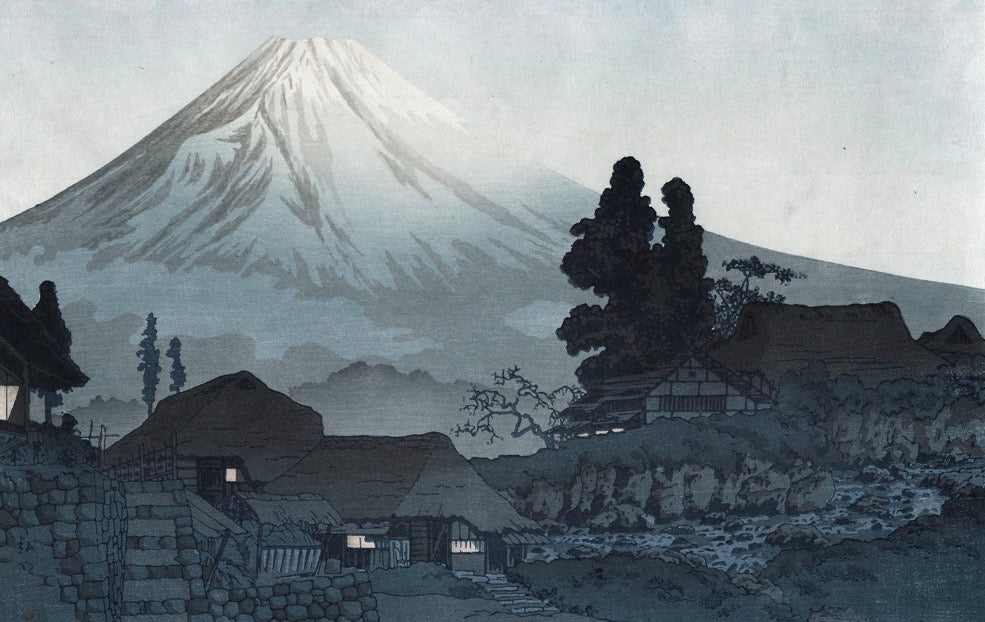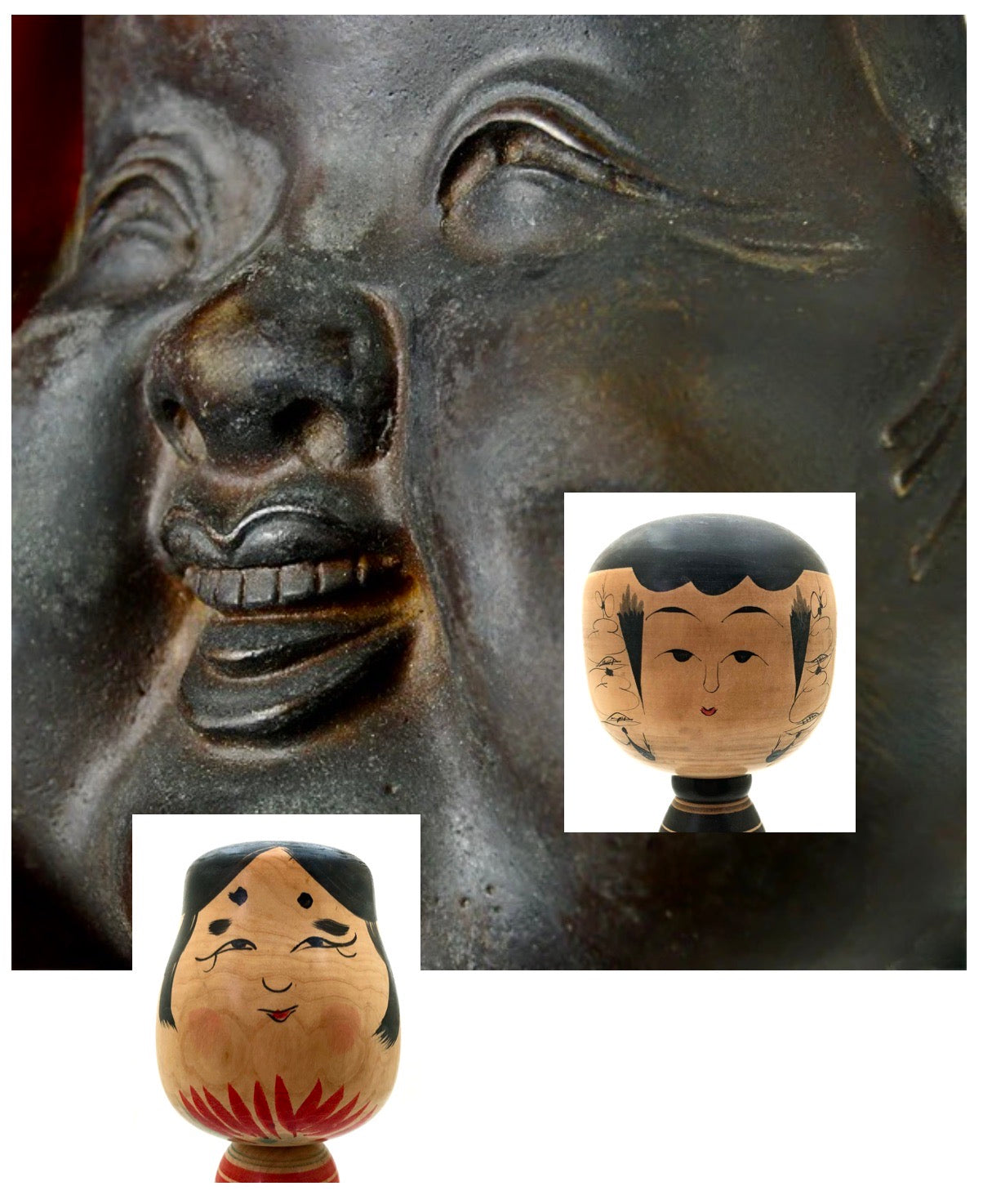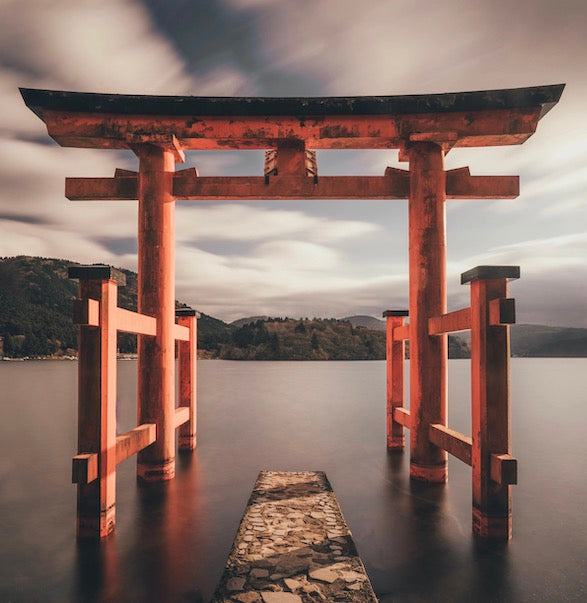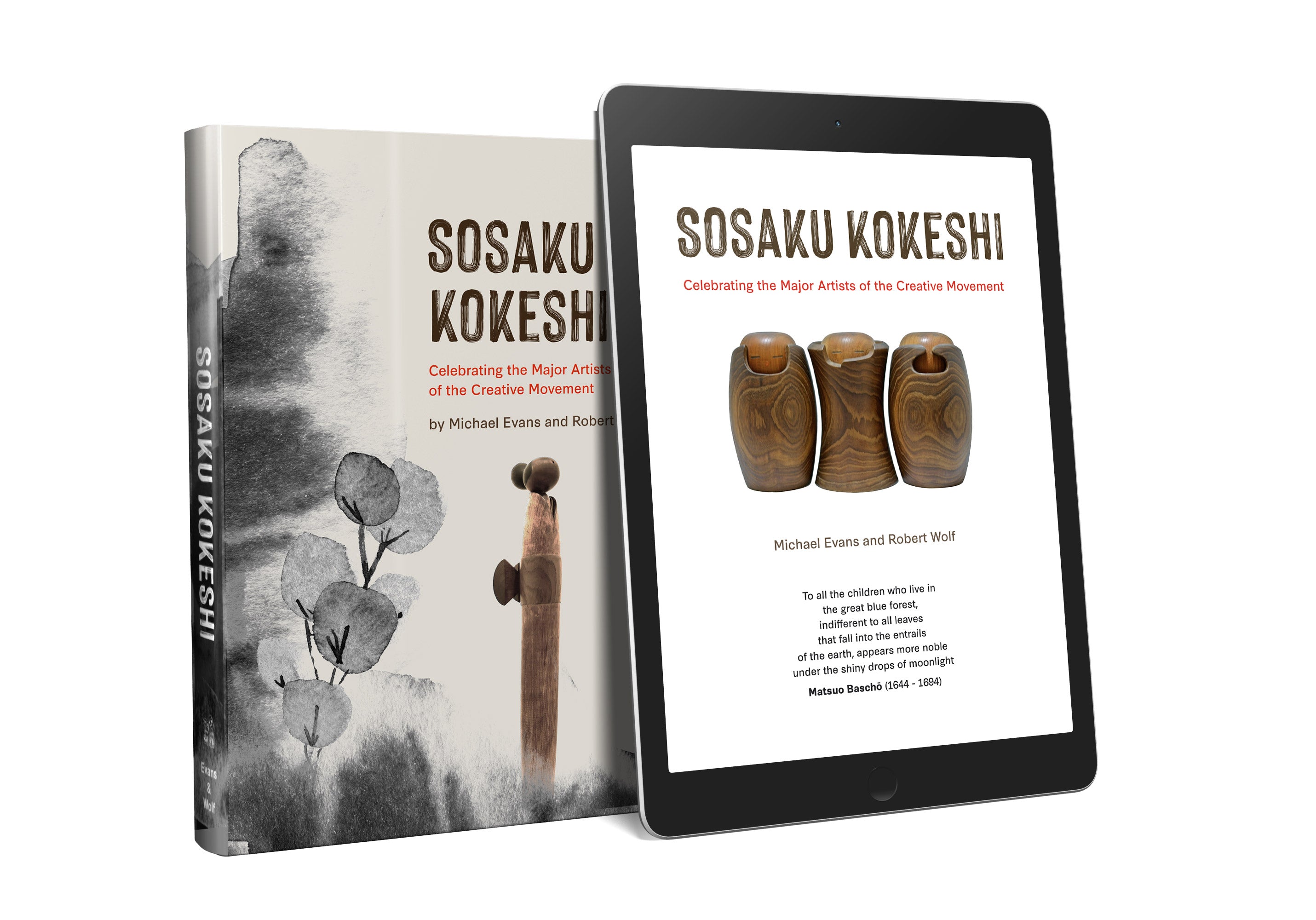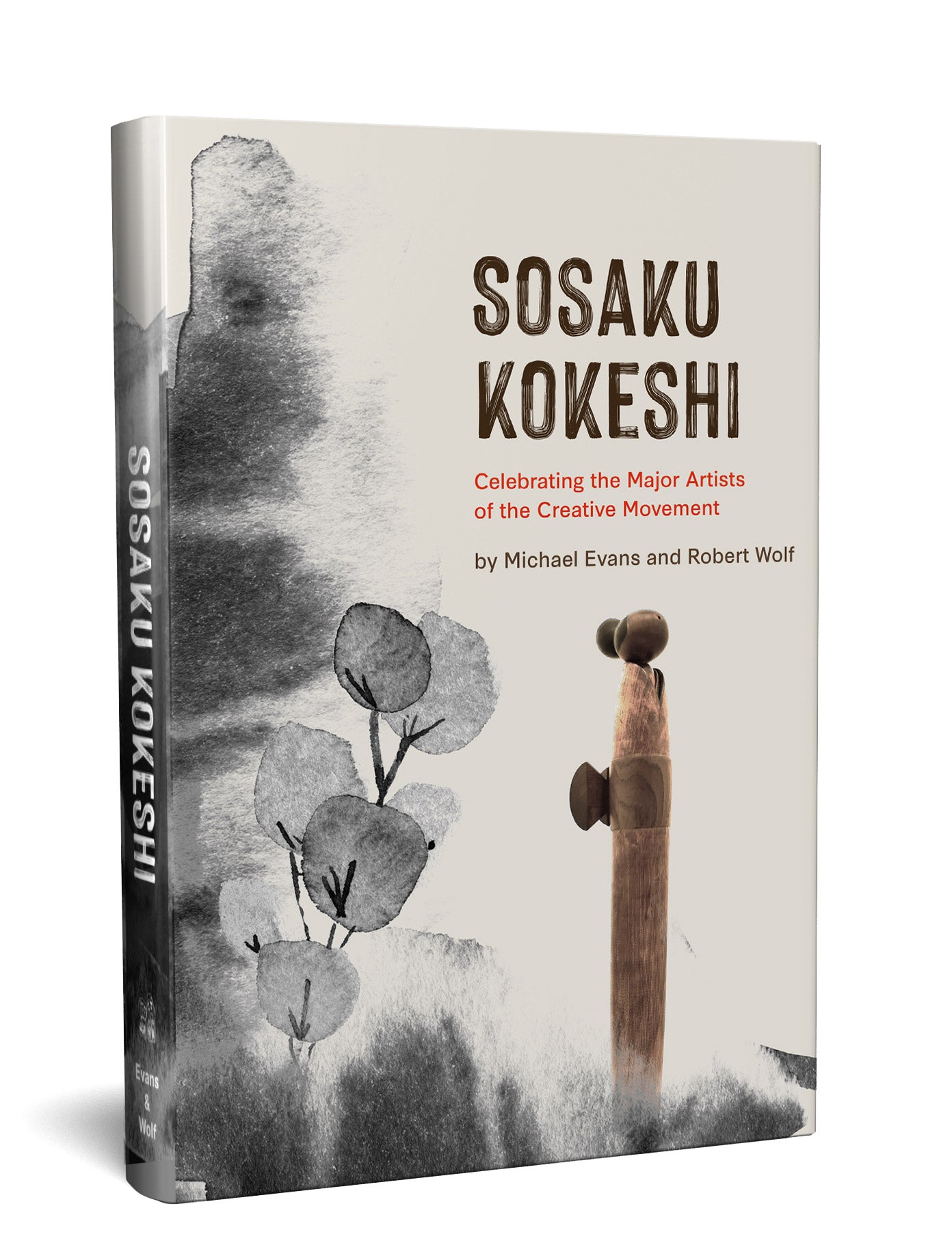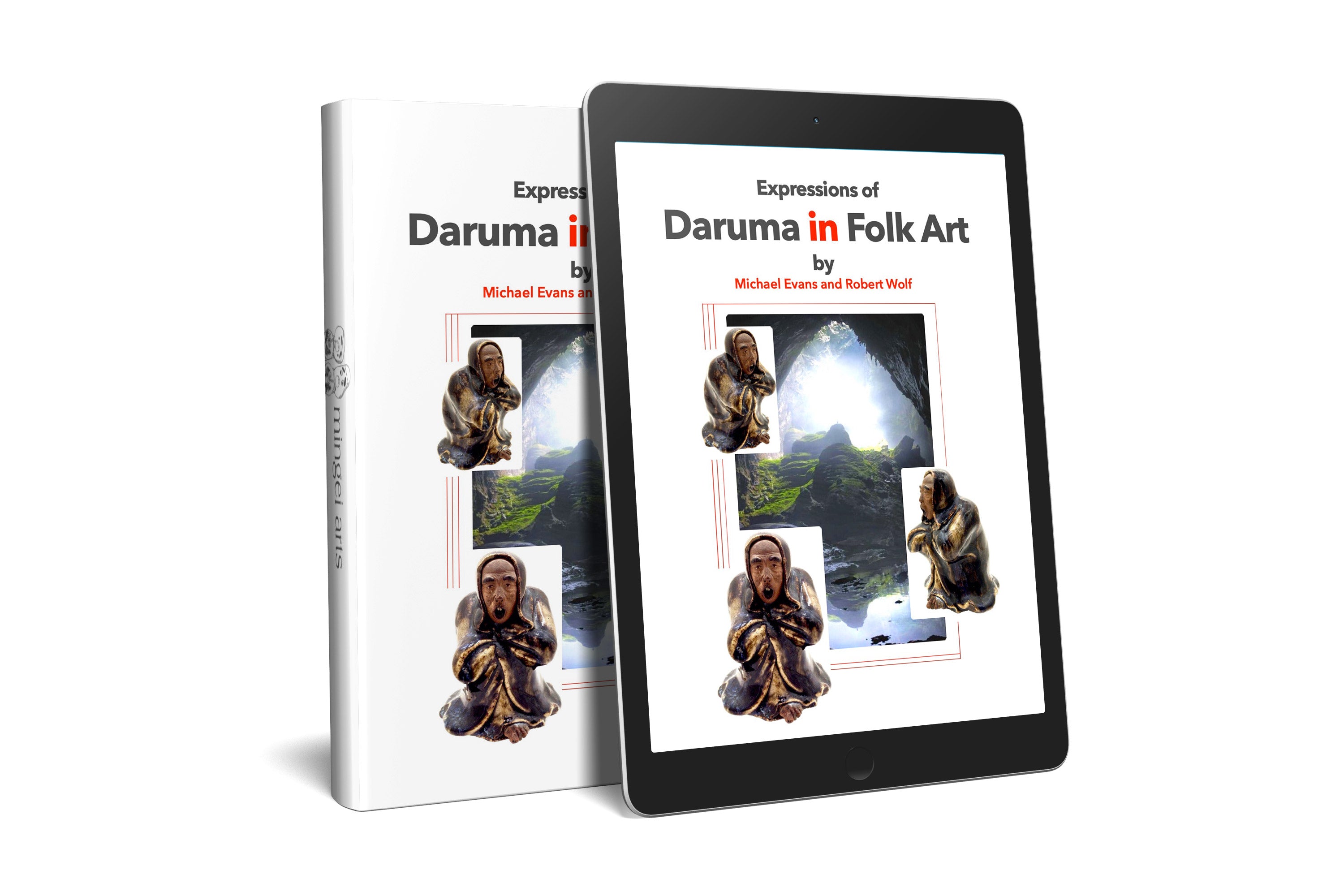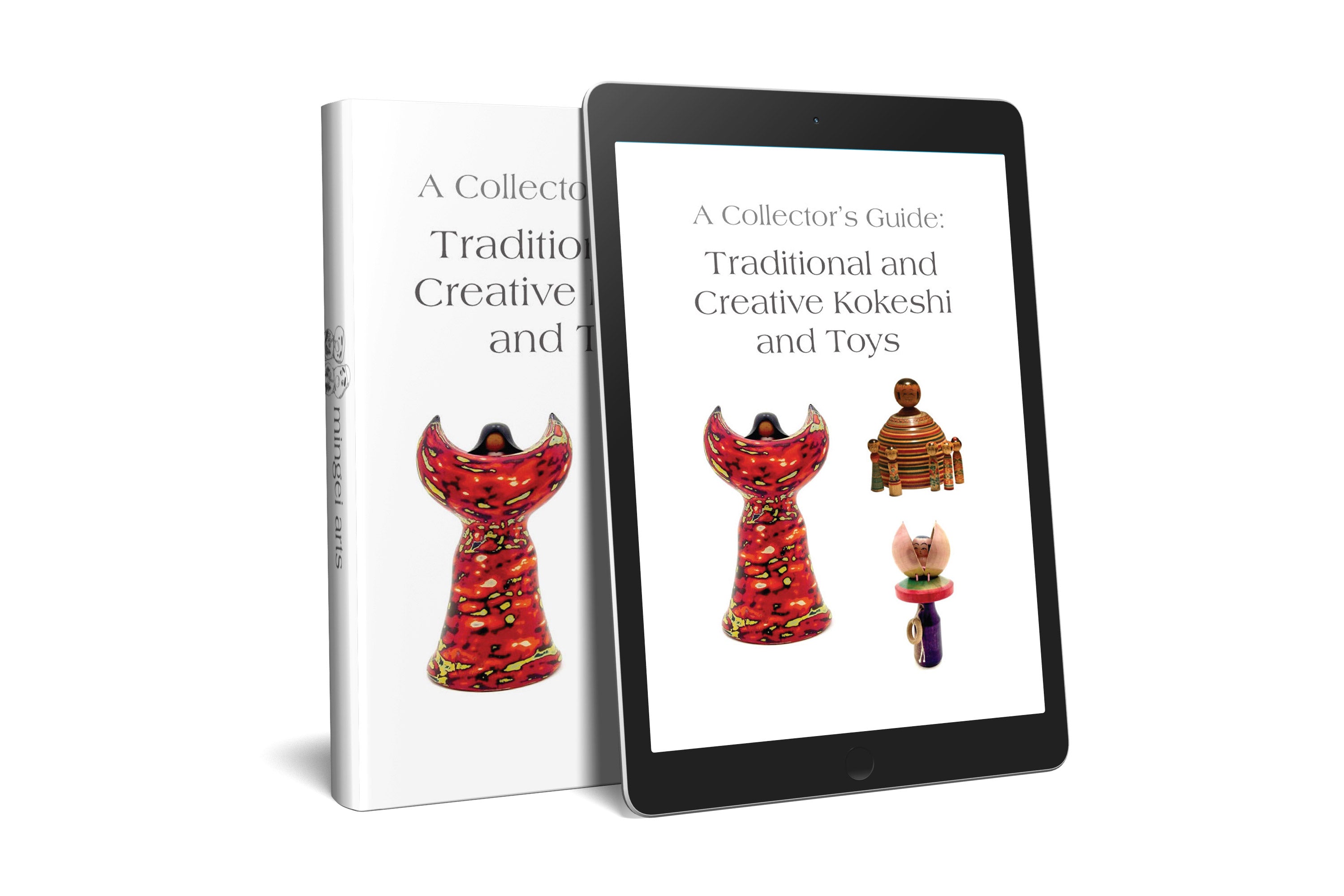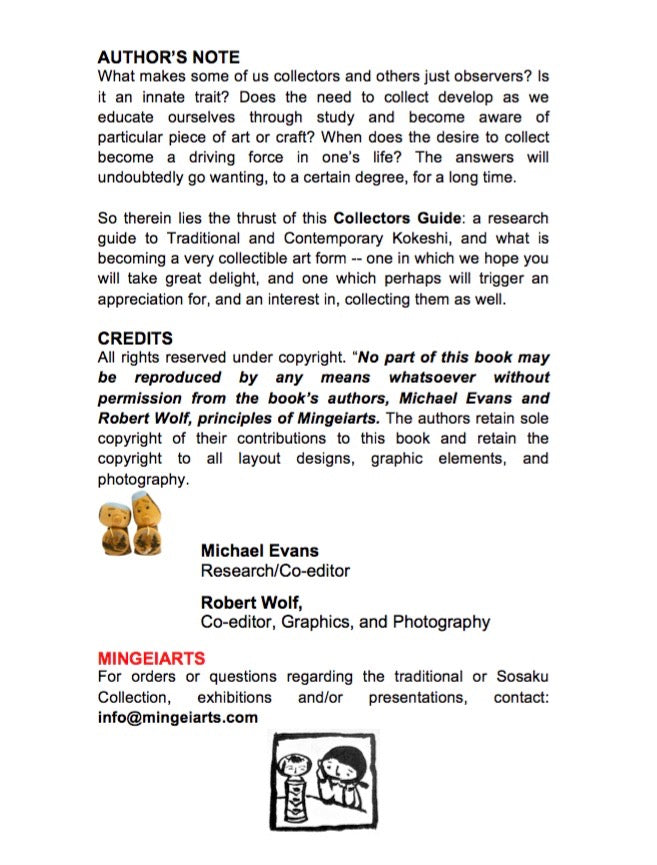Of all the beautiful objects in “the land of the holy gods,” as the Japanese call their country, none are more beautiful than Fuji Mountain and Lake Biwa. This beautiful sacred mountain is a graceful and perfect conical symmetrical form topped with white pristine snow, that is surrounded by sacred temples and shrines. Its worshipped as a house of God (kami) in Japan and its volcanic activity symbolizes the earth, sky, and fire. Sweeping from twenty square leagues of space out of the plain and rising twelve thousand feet in air, Fuji, or Fusi Yama, casts its sunset shadow far out on the ocean, and from fourteen provinces gleams the splendor of its snowy crest.
Long afterward, when Buddhist believers came to Japan, one of them, climbing Fuji, noticed that around its sunken crater were eight peaks, like the petals of their sacred lotus flower. Thus, it seemed to them, Great Buddha had honored Japan, by bestowing the sacred symbol of Nirvana, or Heaven, on the proudest and highest part of Japan. So they also named it Fuji, “the sacred mountain”; and to this day all the world calls this sacred mountain Fuji, or Fusi Yama. The Japanese people believe that the earth which sunk in Omi is the same which, piled to the clouds, is the lordly mountain of Suruga. “There is no other mountain so beautiful in all the earth, there’s not its equal anywhere; therefore call it Fuji, (no two such), the immortal mountain…Fuji Yama”.
It counterpart is Biwa-ko, a sixty mile long and the largest freshwater lake in Japan and looking at it from the hill-tops, the lake appeared to outline a four-stringed lute.” On its bosom rise wooded islands, white, but not with frost; for thousands of herons nestle on the branches of the trees, like lilies on their stems. Others, proud of their new possession, named it the Lake of Omi. It is believed that one night in the ancient times there was a terrible earthquake and when the people of Omi awoke, scarce expecting to find either earth or heaven, when lo! they looked on what had yesterday been tilled land or barren moor, and there was a great sheet of blue reflected over the face of Lake Biwa and when the Japanese first began to claim that the sun goddess first came out from her hiding in the cave. Down under the blue depths, say the people, is the Dragon shrine (Riu Gu), where dwell the dragon-helmed Kai Riu O, and his consort, the shell-crowned Queen of the World Under the Sea.
This further expanded Lake Biwa’s historical traditions when a blind monk, who traveled from village to village, sang sutras throughout the area, and the people realized that the sound attracted fish throughout the lake which were considered an auspicious symbol of Buddhism signifying "wakeful attention" since the fish lack eyelids and remain alert.
With this story in mind, the objects shown below represent these two honored treasures and are becoming very rare and most difficult to find for todays visitors to the beautiful Island of Japan. For many years collectors have acquired beautiful vintage handmade objects and woodblock prints depicting Mount fuji and Lake Biwa in remembrance of this Folk Tale and this picturesque environment.


